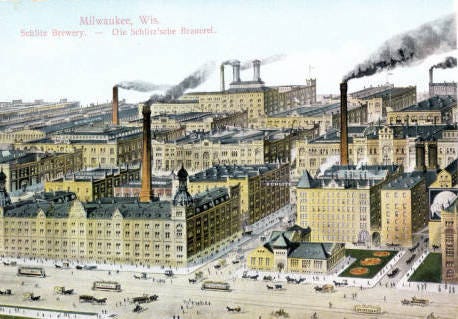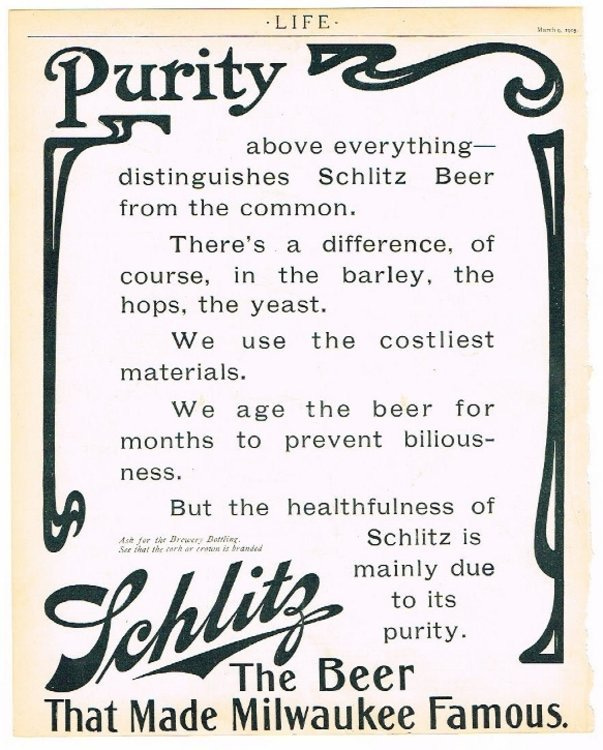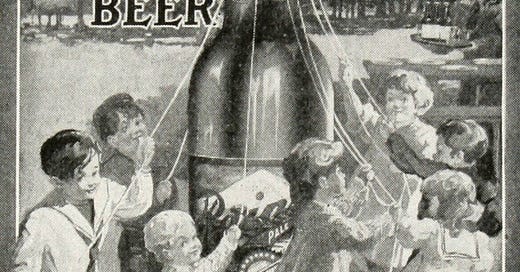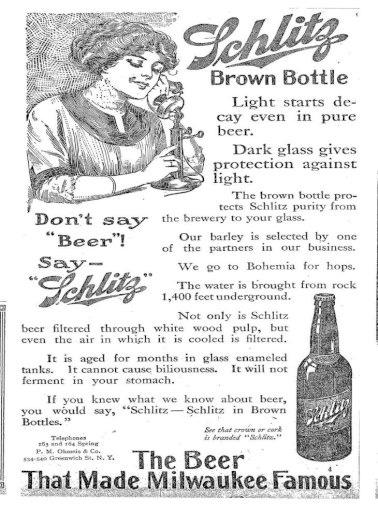How Claude Hopkins Saved Schlitz Beer
A lesson in storytelling from one of the greatest copywriters of the 20th century.
I’d like to kick off this newsletter with a story I return to over and over. It’s just one of the many exploits of famous early 20th century advertising genius Claude Hopkins, and how he saved a now-famous brewery from financial ruin.

Claude Hopkins was an advertising pioneer living in the early part of the 20th century, and believed that advertising existed only to sell something and should be measured and justified by the results it produced. Known as the father of persuasive marketing, he insisted copywriters research their clients' products thoroughly in order to produce "reason-why" copy. Promoting the idea that a good product should sell itself first and foremost, he was a great believer in free samples.
Looking back, that was probably why he answered the distress call from the Schlitz beer company.
After all, they could barely afford to pay the top-tier consultancy fees he commanded at the time.
In the 1900’s, family-owned business Joseph Schlitz Brewing Co. was circling the drain. They were behind in sales by several places, and were struggling to make headway on their competitors. Their last-ditch attempt to save the company was to scrounge together their last pennies and call in Hopkins.

Back then, the marketing buzzword wasn’t TikTok, video, or even storytelling - it was ‘pure’. All the breweries were competing for the place of purest beer on the market. They were even buying full-page ads so they could write ‘PURE’ in bigger letters than everyone else.
In fact, breweries were so anxious to promote the creepily squeaky-clean virginity of their beer, that advertisements typically didn’t contain anything about the flavour at all - yet they had no problem including sinister children and spurious medical claims.
Hopkins, however, saw Schlitz beer as a new challenge. And to overcome it, he’d need a brand new idea. To save Schlitz, he needed to peel back the jargon and find out what ‘pure’ really meant.
Despite being dead last in sales, the Schlitz brewery was an impressive establishment and filled to the brim with the latest in scientific brewing technology. They were more than happy to give Hopkins the grand tour.
He soon found out that it was the kind of place that would make Willy Wonka’s chocolate factory look boring.
Hopkins was shown plate-glass rooms where golden streams of bubbling beer cascaded over pipes. Asking why they did this, they told him the rooms were pumped with filtered air to cool the beers without impurities.
They showed him the expensive filters filled with white wood pulp for a superior flavour, and how the beer never travelled through a pipe that hadn’t been cleaned that morning. The brewery even had its own 4,000 foot artesian wells for their own supply of pure, clean water.
Near the end of the tour, Hopkins spotted an illustration of a weird micro organism framed on the wall. What on earth was it? The answer was that it was Schlitz’s pride and joy - the mother yeast cell. The product of over 1,200 experiments, this yeast had been selectively bred for the distinctive Schlitz flavour: and every single bottle of Schlitz beer contained yeast directly descended from the mother.
Yet all the advertisements Schlitz had ever put out were just about good ol’ purity.

Hopkins was stunned at what he saw. The mastery, the craft Shlitz put into making each beer: why had they never made this public?
The Schlitz staff shrugged. “Everybody makes beer this way,” they said. “The cooling pipes, the pure water, the wood pulp, the mother yeast - it’s all simply the brewing process.”
But Hopkins saw huge potential in letting the public in on these trade secrets. No one outside of the beer business knew about mother yeast, or artesian wells. “Purity” was so often advertised that it was now white noise to the public - but insider terms such as “filtering” and “enameled tanks” that was white noise to beer manufacturers? Now, that was new and interesting.
Hopkins then crafted an advertising campaign based around the amazing ways Schlitz brewed their beer (again, no different to how anyone else did it) - and it worked.
Claude Hopkins was later interviewed about his work at Schlitz beer, and what he had to say is good advice even nowadays for tech firms and software startups:
“The situation occurs in many, many lines. The maker is too close to his own product. He sees in his methods only the ordinary….That is a situation which occurs in most advertising problems. The article is not unique. It embodies no great advantages. There are few advertised products which can’t be imitated. Few who dominate a field have any exclusive advantage. They were simply the first to tell convincing facts.” - Claude Hopkins
Schlitz shot to number one in sales in America, and enjoyed massive success over the next 50 years.
Even though what Schlitz were doing wasn’t unusual in the brewing community, no one else was sharing it. Their normal, everyday routine was actually super interesting to the man on the street.
Hopkins was first to realise that, in advertising, it’s not necessarily what you tell - it’s how you tell it. He convinced millions of people to buy products and services using this principle, and it’s a source of comfort to everyone who thinks their business doesn’t have a story.
How do you use storytelling in your own copy? There are too many ways to count, but here are some:
Remember your passion. Don’t be like Schlitz and neglect to see the wood for the trees. Ask yourself what got you into your industry in the first place - what attracted your attention when you were just starting out? What details would amaze a layman?
Detail, detail, detail! Rushing from beginning to end is no good. Outline your process and take readers step by step on your journey. You can use this kind of in-depth story marketing in emails, social media or long-form content.
Connect emotionally. Good stories have conflict. It wasn’t easy to build your business - so why act like it? Readers love a story of triumph, so never hide your struggles.
Let people connect. Allow customers to get in touch with you through social media, by answering questions over email, or commenting. Make them feel a part of your journey!
It’s a long road - but it’s fun, too. When you tell your story in an ad, in paid content or a sales letter, readers will resent you if they feel you were just making things up to sell something. Building real connections takes time, and you have to be willing to share without expecting a reward. The ROI on storytelling won’t be immediately obvious - but it will be worth it!
Schlitz had no idea of the goldmine they were sitting on, but Claude Hopkins saw it. You could be sat on an amazing story right now - so, what’s yours?






